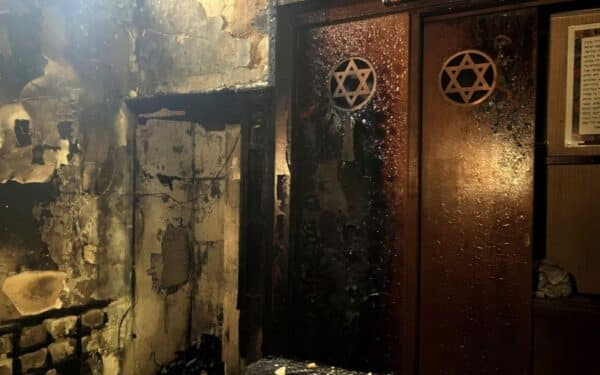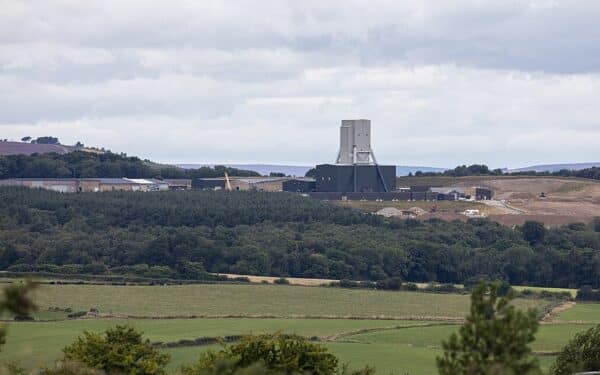This is Tim Marshall’s weekly column on geopolitics. Subscribe to Reaction here.
Twelve times 40,000 = 480,000. That’s the number of civilians the Israeli military appears to be readying to move out of the southern Gaza city of Rafah and into tented encampments a few miles to the north.
This week, images from satellite company Maxar Technologies showed multiple tents being put up outside Khan Younis, a city three miles from Rafah. A few weeks ago, multiple Israeli media outlets reported (unconfirmed) that the Israeli government was buying 40,000 tents, each capable of housing up to 12 people. The images suggest the reports were correct, and that after months of delay, the IDF is preparing for the assault on Rafah. It’s the last urban area it has not yet entered and where it is thought most of any surviving Israeli hostages are being held.
The military was almost ready to advance in January, but American concerns about the potential loss of civilian life put that on hold. Washington demanded to see a credible plan for getting civilians out of the way before the offensive began. The appearance of the tents, movement of two reservist brigades into Gaza, and a visit by Israeli officials to Egypt signals the beginning of the operation. The IDF Chief of Staff and the head of the Shin Bet intelligence service are reported to have been in Egypt this week to discuss how to avoid the assault leading to tens of thousands of Gazans trying to breach the Rafah/Egypt border.
The military assault will only begin in force once hundreds of thousands of already displaced Gazans are moved out, a process which could take several weeks. Then the IDF will go after the four Hamas battalions which are still intact and however many Hamas fighters from the dismantled 18 other battalions have retreated there. There are approximately 1,000 men in each battalion and, at the moment, they are hidden within the civilian population as well as below ground in the now diminishing tunnel network built over the past two decades.
The two IDF reserve brigades are being moved from the Israeli/Lebanon border to undertake “defensive and tactical missions” in central Gaza. One will guard the pier the US is building on Gaza’s coast to help deliver aid. The other will protect the road the Israelis have built which runs east to west from the Israeli border to the coast and divides northern and southern Gaza. This will free up the “Nahal” Infantry Brigade to join troops preparing to enter Rafah. Once that begins in scale the operation is expected to take about six weeks.
Military analysts believe that the scale of fighting, and related airstrikes, seen in Gaza City and Khan Younis may not be repeated. Rafah is smaller than those cities and has far fewer high-rise buildings to clear. The Israeli government, aware of US criticism, may go for a more targeted operation.
If the IDF kills or captures the senior Hamas leadership and frees the hostages, then major combat operations will be over, and the military will shift towards anti-insurgency fighting. It is still fighting pockets of resistance in northern Gaza, and this will continue. However, “victory” in Rafah will have partially met some of Israel’s war aims.
If so, several things will follow. Even as sporadic violence continues, rounds of fraught diplomatic talks will take place to put together some sort of Palestinian governing body for Gaza. These will include who will fund the reconstruction of the territory. At the same time, Israel will shift focus to Hezbollah and the border with Lebanon.
Unless the reduction in fighting in Gaza leads to a reduction in cross-border Israel/Hezbollah shelling, Israel will be tempted to try to resolve the situation with greater force. Almost 80,000 Israelis remain displaced having fled daily barrages of Hezbollah rockets which began shortly after the Hamas Oct 7 attack on Israel. A similar number of Lebanese have also had to leave their homes.
Israel now has 100,000 troops deployed near the border. Its leaders have repeatedly warned Hezbollah that it must abide by the 2006 UN Resolution 1701 instructing its forces to withdraw beyond the Litani River from where its short-range missiles would no longer be a danger. Last Sunday, Benny Gantz, a member of Israel’s war cabinet, described the border situation as his country’s “greatest and most urgent challenge”.
Hezbollah has refrained from using its long-range and guided missiles, partially because it fears all-out war, but also because its arsenal is part of Tehran’s safety net restraining an all-out Israeli attack on Iran and Iran funds Hezbollah.
However, if Israel decides it must act, Hezbollah will respond, possibly with greater force than anything Israel has experienced since the 1973 Arab/Israeli war.
That is one scenario for a post-Gaza conflict. But first – Rafah.
Write to us with your comments to be considered for publication at letters@reaction.life




